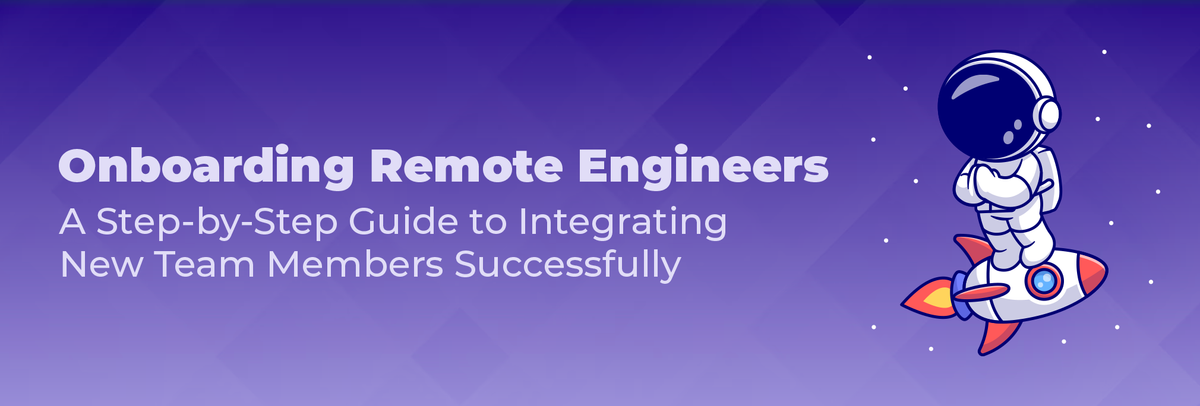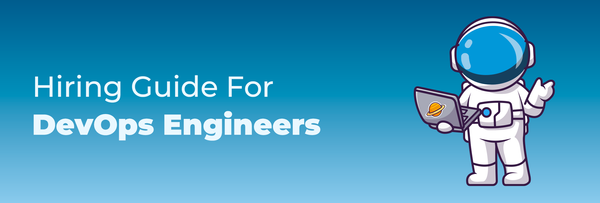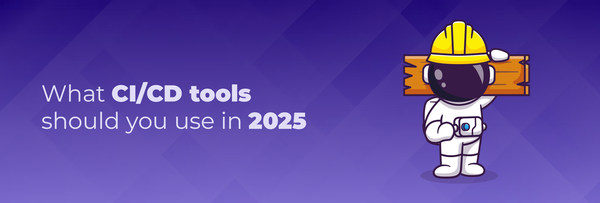Onboarding Remote Engineers: A Step-by-Step Guide to Integrating New Team Members Successfully

Navigating the realm of remote work, especially when onboarding new engineers, can feel like traversing uncharted territory.
The struggle to seamlessly integrate them into your team, ensuring productivity and engagement, is a pressing concern for many managers.
If you encounter this challenge, do not worry!
From establishing clear objectives to fostering ongoing support and communication, this article has all the answers you need to streamline the onboarding process and set your remote engineers up for success.
According to statistics, 86% of engineers are engaged in entirely remote software engineering jobs, so let’s get started and help you build your remote team from the ground up.
Why Is The Onboarding Process Important?
In today's rapidly evolving work landscape, the onboarding process has emerged as a crucial aspect of organizational success.
Beyond being a mere formality, effective onboarding serves as the cornerstone for integrating new team members into the fabric of the organization, setting the stage for their long-term engagement and productivity.
Approximately 77% of HR professionals anticipate that the significance of onboarding remote employees will further escalate in the future.
Here's why the onboarding process holds such paramount importance
- Smooth Transition and Integration
A well-structured onboarding program ensures a seamless transition for new hires, helping them acclimate to their roles, responsibilities, and organizational culture.
By providing them with the necessary tools, resources, and support from day one, organizations can facilitate a smoother integration process, reducing the time it takes for new employees to become fully productive contributors.
- Enhanced Productivity
When new hires are equipped with a clear understanding of their roles and responsibilities, as well as the knowledge and skills necessary to fulfill them, they can hit the ground running and make meaningful contributions to their teams and projects more quickly.
Employees who undergo a robust onboarding experience exhibit a 70% increase in productivity.
This not only benefits individual employees but also contributes to overall team and organizational performance.
- Improved Retention Rates
A comprehensive onboarding process goes beyond merely introducing new hires to their job duties; it also helps cultivate a sense of belonging and engagement within the organization.
By providing new employees with the support, resources, and connections they need to succeed, organizations can foster a positive work environment and strengthen their commitment to the company.
Did you know that organizations with effective employee onboarding can achieve an impressive 82% increase in retention rates?
- Alignment of Expectations
Onboarding serves as an opportunity for organizations to set clear expectations for new hires regarding performance standards, company values, and organizational goals.
By aligning the expectations of both the organization and the new employee from the outset, organizations can mitigate potential misunderstandings or discrepancies down the line, fostering a sense of mutual understanding and accountability.
Approximately 80% of employees perceive onboarding programs as beneficial for their assimilation into and comprehension of company culture.
- Building a Positive Employer Brand
A positive onboarding experience can have a lasting impact on how new employees perceive their employer and their overall employee experience.
In a survey, 78% of employees expressed that their onboarding experiences contributed to a favorable candidate impression and cultivated a positive attitude toward their employer.
Organizations that prioritize onboarding demonstrate their commitment to supporting and investing in their employees' success from the very beginning, which can significantly enhance their employer brand and reputation.
This, in turn, can help attract top talent and position the organization as an employer of choice within the industry.
In summary, the onboarding process plays a fundamental role in laying the groundwork for the success and longevity of new hires within an organization.
As such, effective onboarding should be viewed not just as a routine administrative task but as a strategic investment in the organization's future success.
Wondering how to successfully onboard remote software developers?
In the next section, we will explore how to successfully onboard remote employees.
Step-By-Step Guide For Onboarding Remote Engineers
Despite the numerous benefits associated with the onboarding process, statistics from CareerBuilder reveal that approximately 2 out of 3 employers lack a formalized onboarding procedure.
Moreover, Talmundo reports that a third of employees have not undergone an onboarding process.
Undoubtedly, a huge shift is required in this aspect of recruiting new talent.
According to Workable, remote onboarding ranks among the primary challenges in remote recruitment.
Here’s how you can fix it with this step-by-step guide and successfully onboard remote software developers.
- Pre-Onboarding for Remote Engineers
This phase, occurring between job offer acceptance and the start date, involves:
- Contract Preparation
Craft a detailed employment contract outlining roles, goals, schedule, and payment terms, specifying technologies to be used.
- Account Setup
Create necessary accounts, share login details, and introduce new hires to team communication channels and task management tools.
- Welcome Communication
Send a welcoming email with key contacts, first-day schedule, and initial week tasks.
- Resource Preparation
Develop a set of tutorials or digital guides featuring essential company information, goals, and technical procedures. Include an index for easy document access.
Ensure the content is concise and inspiring, aiming to foster a sense of community and commitment among new hires without overwhelming them on their first day.
- Proactive Planning
Anticipate preferences for immediate coding tasks, fostering a productive start.
- Knowledge Base
Maintain a centralized knowledge base with clear documentation of company policies, procedures, and instructions, facilitating easy access for all employees.
Regular updates ensure relevance and support ongoing growth and team autonomy.
- Implement a buddy system
One of the remote onboarding best practices includes implementing a buddy system.
Transitioning to a new work environment, especially in remote settings, can pose challenges regardless of experience level.
To ease this transition, assign a buddy to guide new hires as a part of your process to onboard new remote employees.
Ensure new team members have accessible colleagues to rely on rather than just managers. Assigning buddies of similar team status fosters open communication and rapid learning.
Buddies offer leadership practice while newcomers gain insights into company processes. Typically, less experienced developers are paired with slightly more experienced ones.
Clarify that buddies have availability, particularly in the initial weeks, to avoid overwhelming them with managerial responsibilities.
Their involvement should be voluntary to prevent resentment.
Here’s what new hires can expect from their work buddies:
Table 1
A Microsoft study revealed that 97% of new employees who met with their onboarding buddy at least eight times in the first 90 days reported a significant boost in productivity.
The reason?
Their buddy simplified the settling-in process, making them more comfortable and quicker to adapt to the company culture, which in turn heightened their confidence and motivation, leading to increased productivity.
Additionally, the same Microsoft research found that new hires who had buddies felt 23% more satisfied with their onboarding experience after just one week compared to those without buddies.
This satisfaction rate rose to 36% after the first 90 days, highlighting a notable increase in contentment among new hires with buddies versus those without.
- Familiarize New Team Members with Company and Project Details
Providing comprehensive information about your company and project sets the stage for a successful onboarding experience for new team members.
Here are some of the key questions you would want to address:
- Business and Project Scope
Outline the business and project objectives you're hiring for.
- Project Features
Describe the key features and functionalities of the project.
- Short-term and Long-term Goals
Clarify the short-term and long-term goals associated with the project.
- Past Challenges and Solutions
Discuss any challenges encountered previously and how they were resolved.
- Current Priority Tasks
Identify the most critical tasks at present.
Offering answers to these questions provides valuable insights into your company's status and direction.
Moreover, it helps new team members feel more acclimated to their roles from the outset.
- Establish Remote Work Policies
Setting clear remote work policies is essential for effectively onboarding remote employees.
This step ensures that new hires understand the expectations and guidelines for remote work arrangements.
Here are the key areas to cover:
- Remote Work Guidelines
Define the company's remote work policy, including expectations regarding work hours, communication channels, and availability.
- Technology Requirements
Specify the necessary technology and tools for remote work, such as communication platforms, project management software, and security protocols.
- Communication Protocols
Outline preferred communication methods for remote collaboration, including scheduled meetings, instant messaging, and email etiquette.
- Performance Evaluation
Clarify how remote engineers will be evaluated and measured for their performance, including key performance indicators (KPIs) and feedback mechanisms.
Establishing remote work policies ensures consistency and transparency in remote work arrangements.
It helps remote engineers understand their roles and responsibilities, fostering productivity and collaboration despite physical distance.
- Initiate First Project Engagement
Commencing the first project is a pivotal step to onboard remote software developers.
It marks the beginning of their practical involvement in the company's objectives and facilitates the application of their skills in a real-world context.
- Project Introduction
Introduce the new engineers to the project they will be working on, providing an overview of its objectives, scope, and deliverables.
- Clarify Roles and Responsibilities
Clearly define the roles and responsibilities of each team member involved in the project, ensuring alignment and accountability.
- Assign Tasks
Assign specific tasks or modules to each remote engineer, considering their skills, experience, and preferences.
- Set Expectations
Communicate clear expectations regarding project timelines, milestones, and quality standards to ensure mutual understanding and alignment.
- Provide Resources
Equip remote engineers with the necessary resources, tools, and documentation required to complete their assigned tasks effectively.
Engaging remote engineers in the first project promptly allows them to apply their skills and contribute to the company's goals from the beginning.
It fosters a sense of ownership and involvement, promoting motivation and commitment.
Along with this, active participation in project tasks facilitates the integration of new engineers into the team and familiarizes them with the company's workflow and processes.
- Ask For Feedback
Receiving feedback on the onboarding process from remote engineers is essential for refining procedures and ensuring their seamless integration.
By actively seeking input through surveys or meetings, organizations gain valuable insights into the effectiveness of their onboarding efforts.
Listening attentively to feedback and taking proactive steps to address any issues demonstrates a commitment to continuous improvement.
This feedback loop fosters a positive work environment and supports the long-term success of remote engineers within the company.
Approximately 9% of recently onboarded employees cited departure from their company due to a subpar onboarding encounter.
This initial process serves as the first interaction a new hire has with the organization.
A negative experience during onboarding raises significant concerns about the suitability of the role or company culture.
Moreover, a staggering 52% of individuals express feelings of being inadequately trained following their onboarding experience.
Let’s not be an organization that fails at a very important stage of the recruitment process.
As you embark on your onboarding journey, Teamo stands ready to amplify your success.
- Seamlessly integrate top-tier, pre-screened software developers from emerging markets into your remote development team and unlock unparalleled growth with our superteam of 10x talent.
- With Teamo's cutting-edge talent solution, you'll navigate onboarding effortlessly while accessing the best talent for your business needs.
- Utilize our platform for streamlined hiring, management, and payment processes, ensuring a smooth transition and rapid productivity.
Embrace growth fearlessly with Teamo by your side.
FAQs
- What are the 4 C's of effective onboarding?
The 4 C's of effective onboarding are Clarity, Connection, Culture, and Compliance.
Clarity ensures clear expectations, Connection fosters relationships, Culture instills company values, and Compliance covers legal and procedural requirements.
- What is an onboarding checklist?
An onboarding checklist is a structured document outlining tasks, activities, and milestones to ensure new employees receive a comprehensive introduction to their role, team, and company.
It typically includes paperwork completion, orientation sessions, training schedules, introductions to colleagues, and setting up necessary tools or systems.
This checklist serves as a roadmap to streamline the onboarding process and ensure nothing essential is overlooked, facilitating a smooth transition for new hires.




